The Nazca Lines in Peru
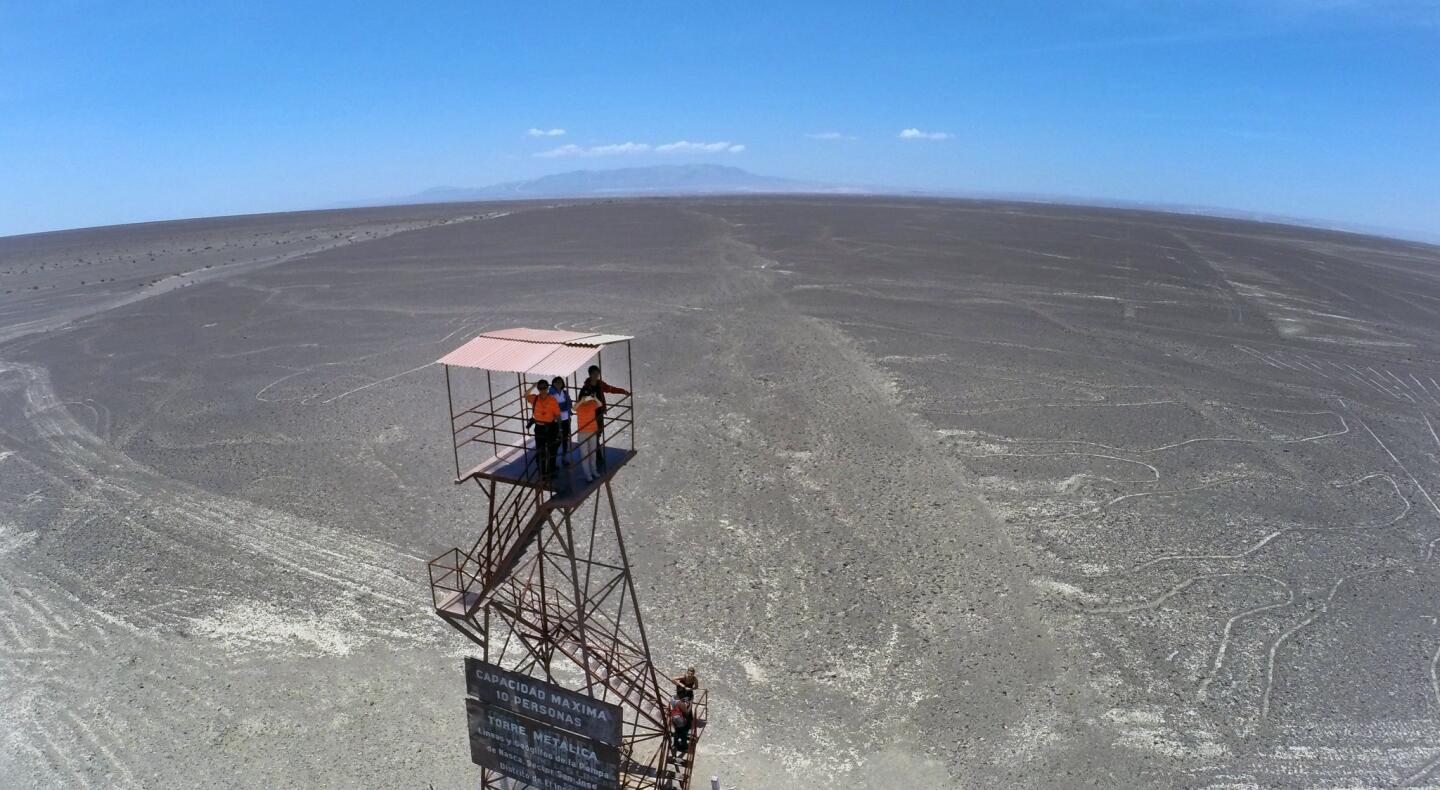
The Nazca Lines are giant geoglyphs near Nazca, Peru. The Nazca people created them centuries ago by removing stones from the desert floor to reveal lighter-colored soil beneath. Viewing towers are available, but the best view is from an airplane.
(Martin Bernetti / AFP/Getty Images)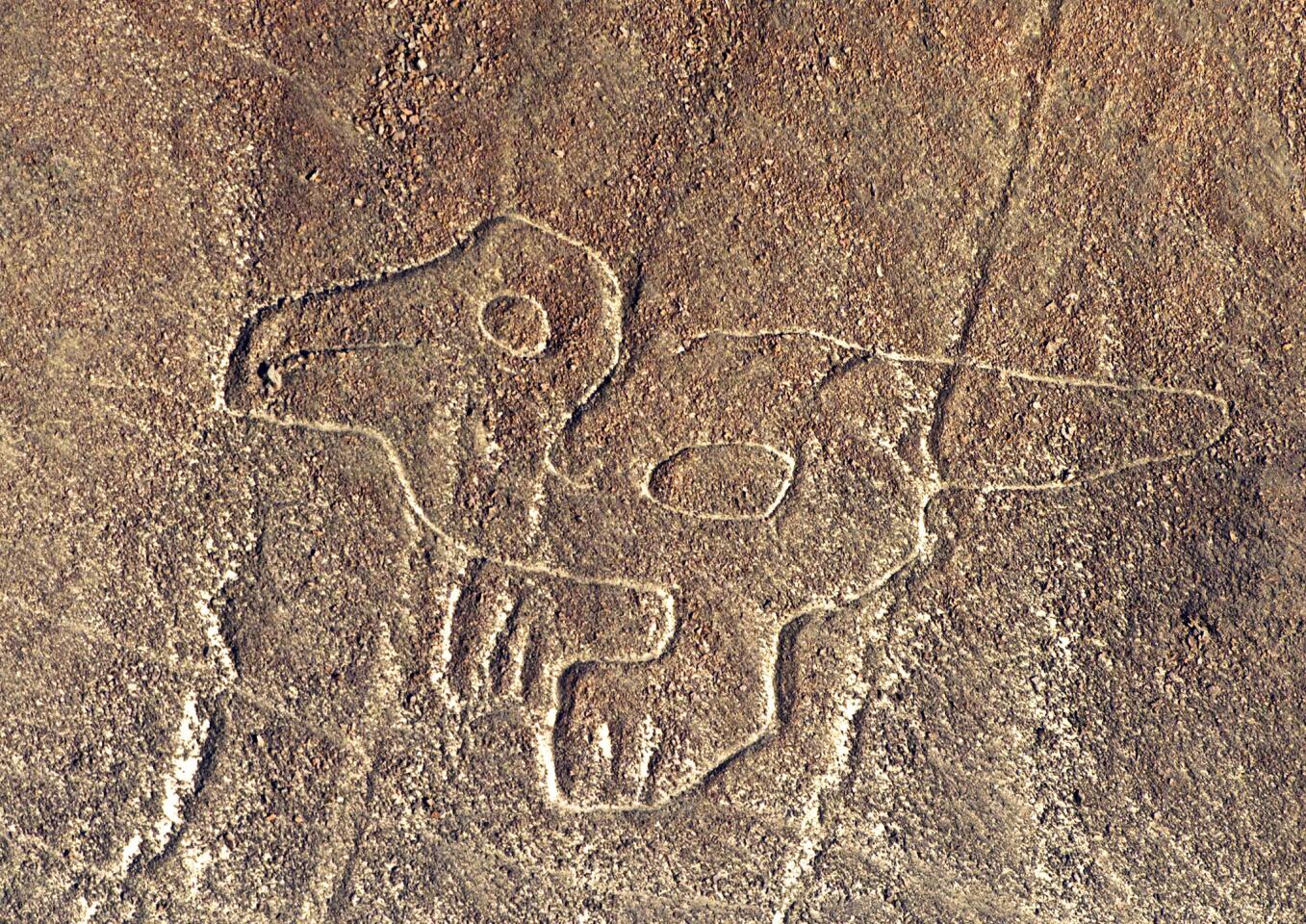
An aerial view of a geoglyph representing what appears to be a bird.
(Martin Bernetti / AFP/Getty Images)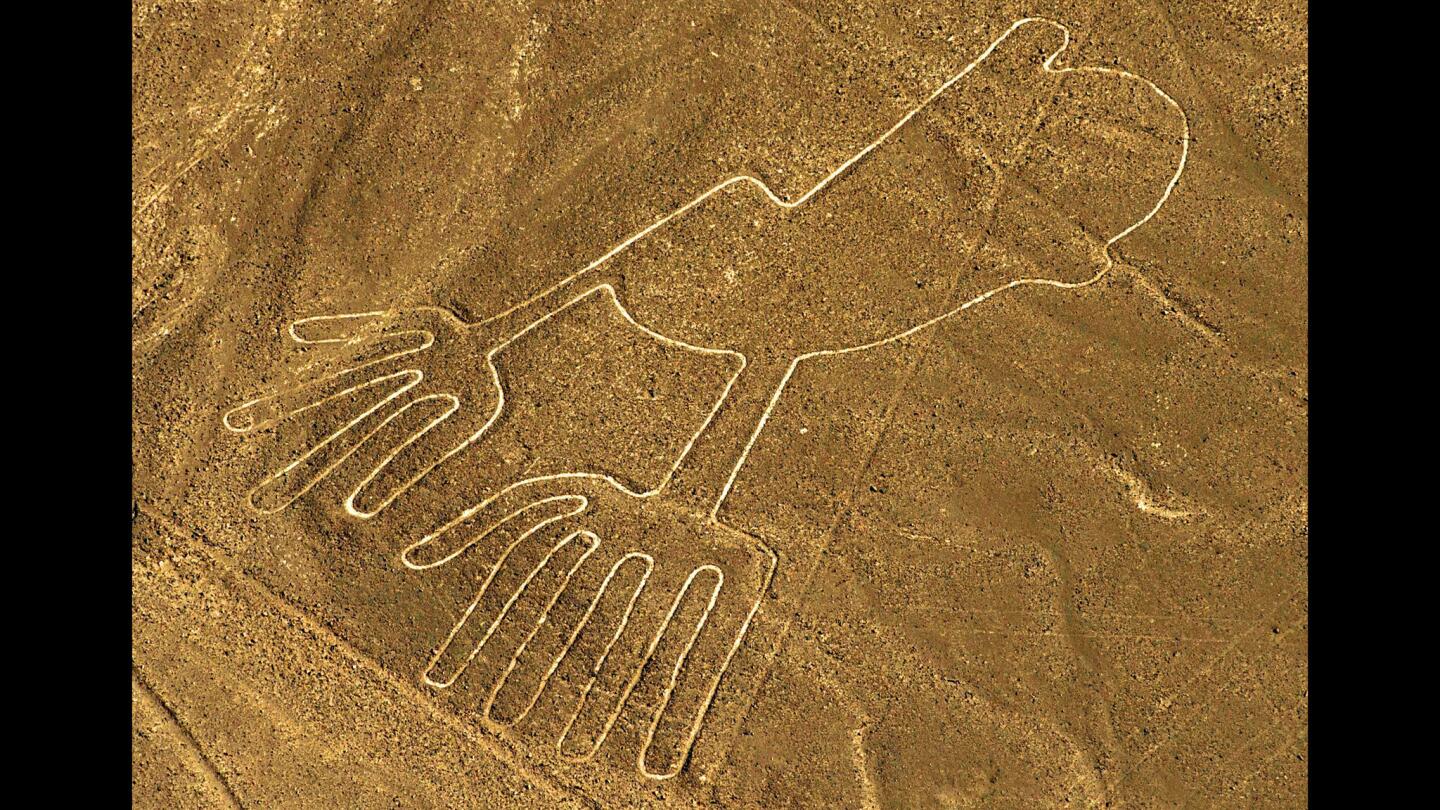
Aerial view of one of the images etched in the earth near Nazca, Peru. These appear to be hands, but note that one has just four fingers.
(Martin Bernetti / AFP/Getty Images)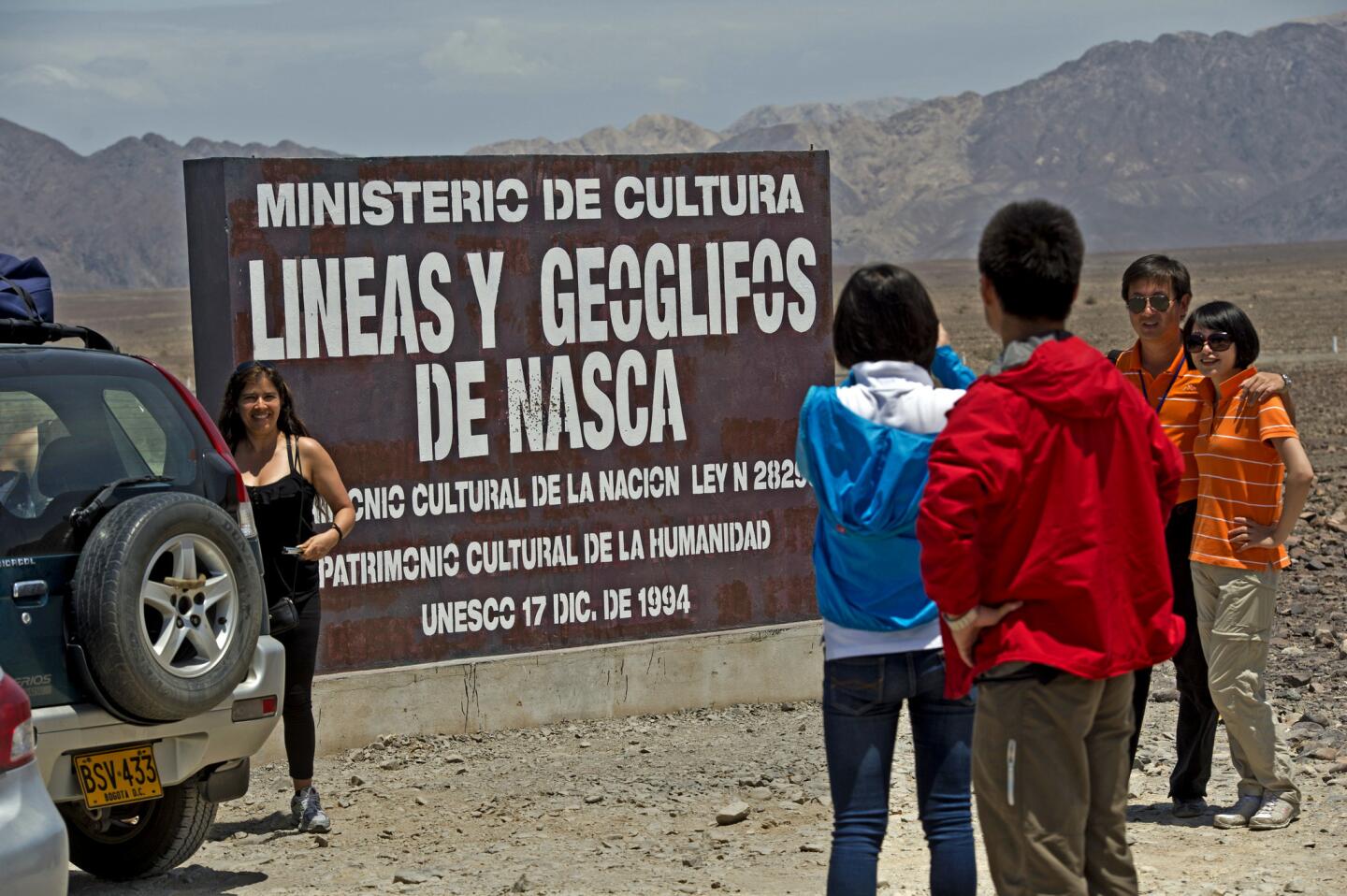
Tourists pose next to a sign identifying the Nazca Lines. The riddle of the lines dates back more than 2,000 years.
(Martin Bernetti / AFP/Getty Images)Advertisement
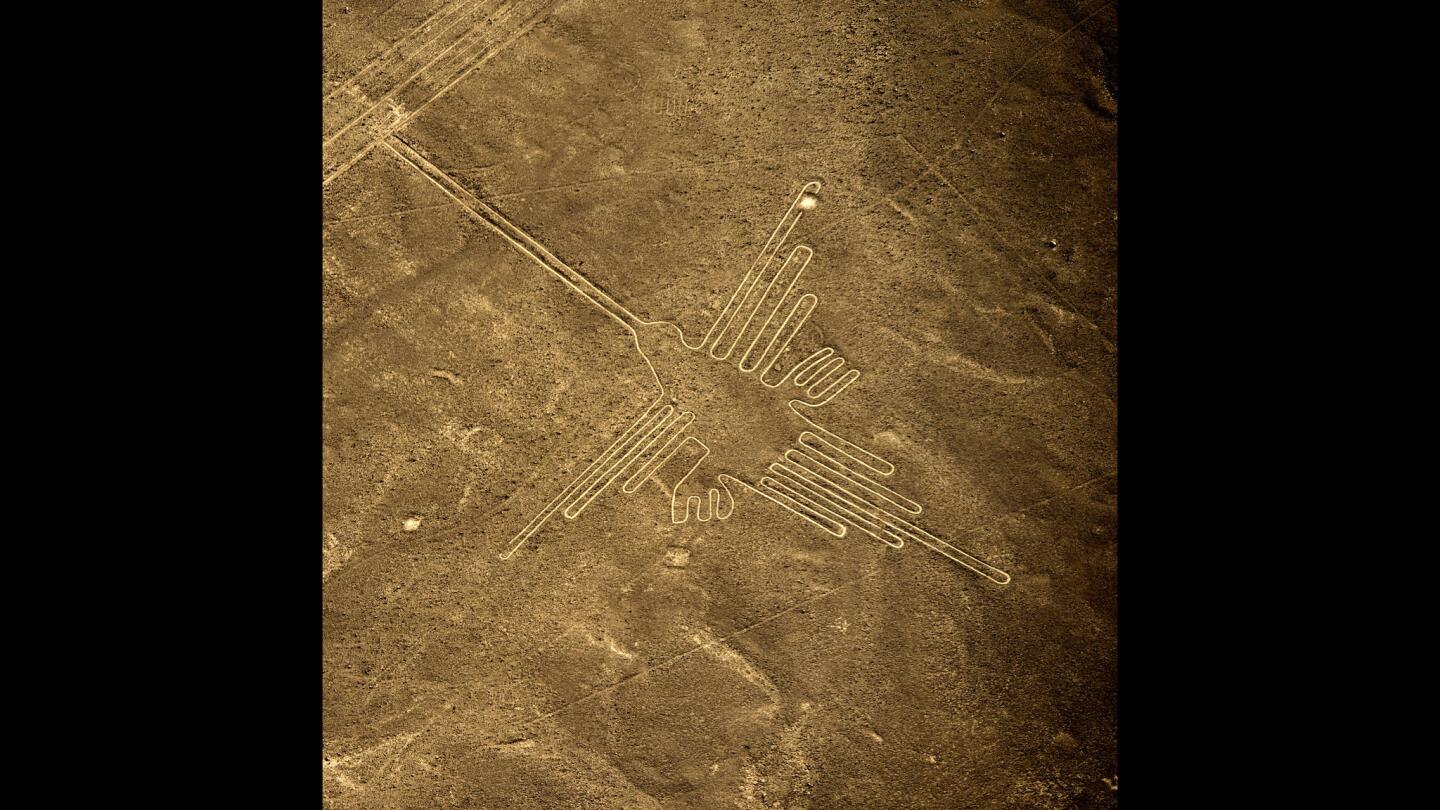
Aerial view of a depiction of what is believed to be a hummingbird. It’s one of the best preserved of the Nazca Lines figures.
(Martin Bernetti / AFP/Getty Images)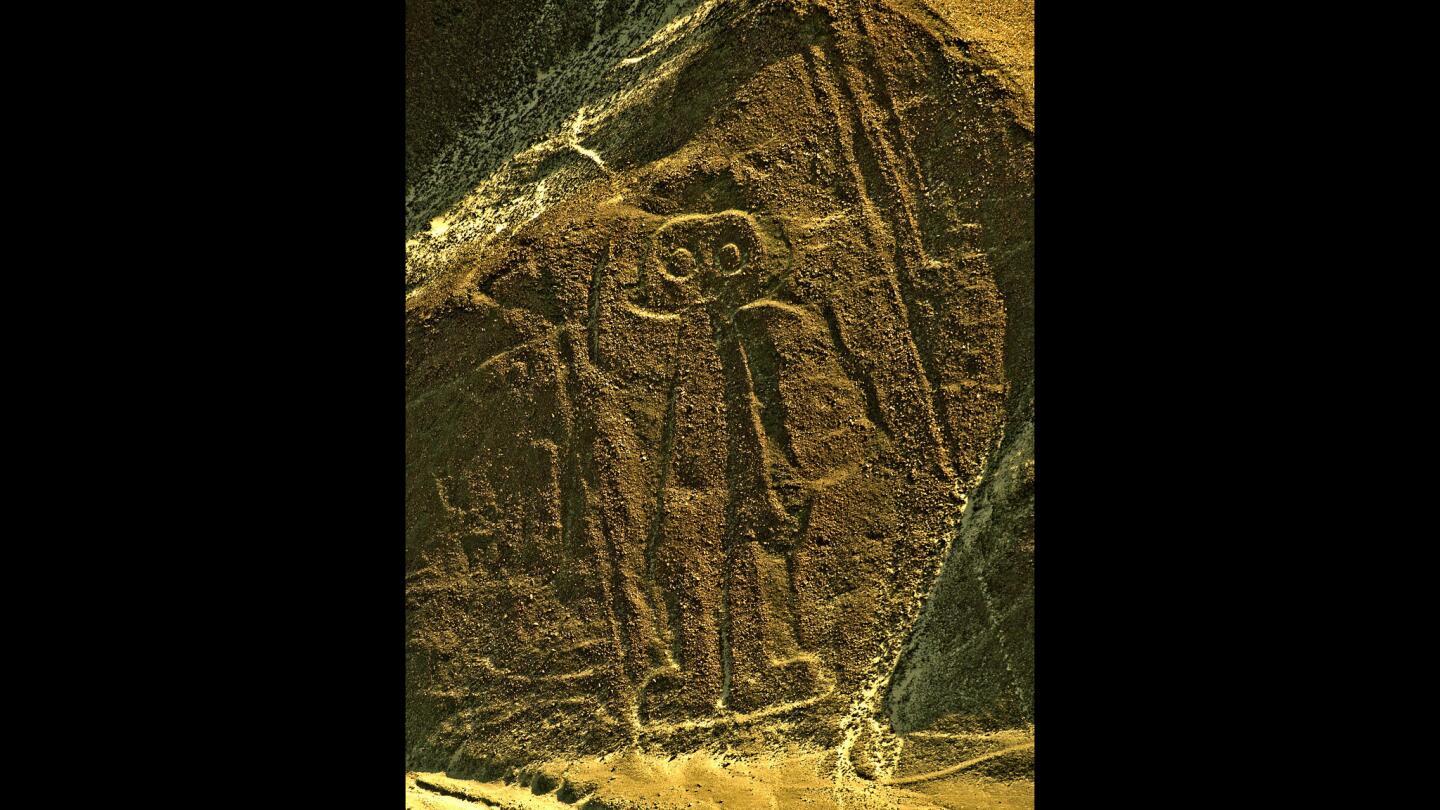
An anthropomorphic geoglyph known as the Astronaut (32 yards tall). The purpose of the Nazca Lines remains unclear. Some theorists believe the Nazca people created them to be seen by their gods, perhaps as a plea for rain in this dry region.
(Martin Bernetti / AFP/Getty Images)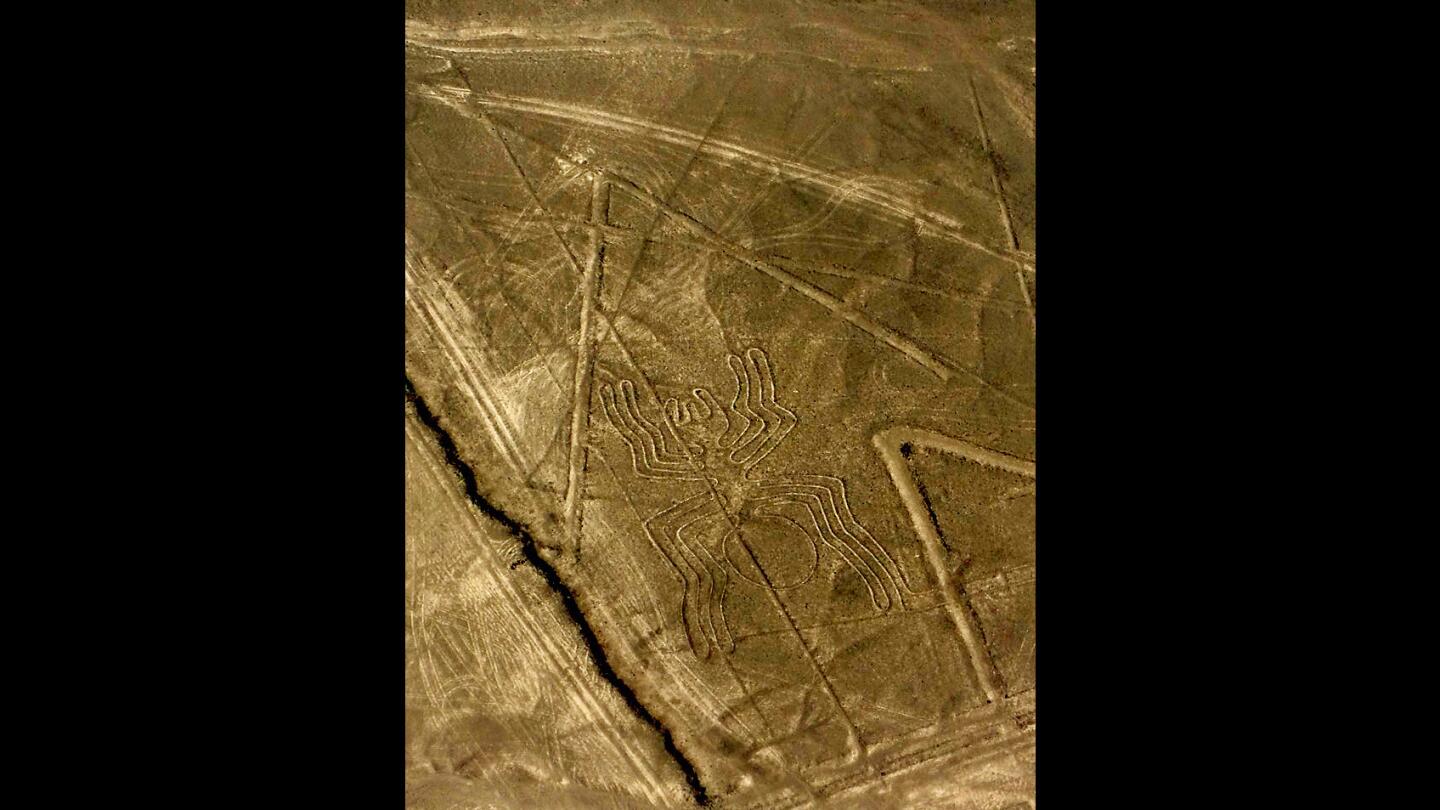
View from a plane of a spider and other lines in the desert floor.
(Hilary MacGregor / For the Los Angeles Times)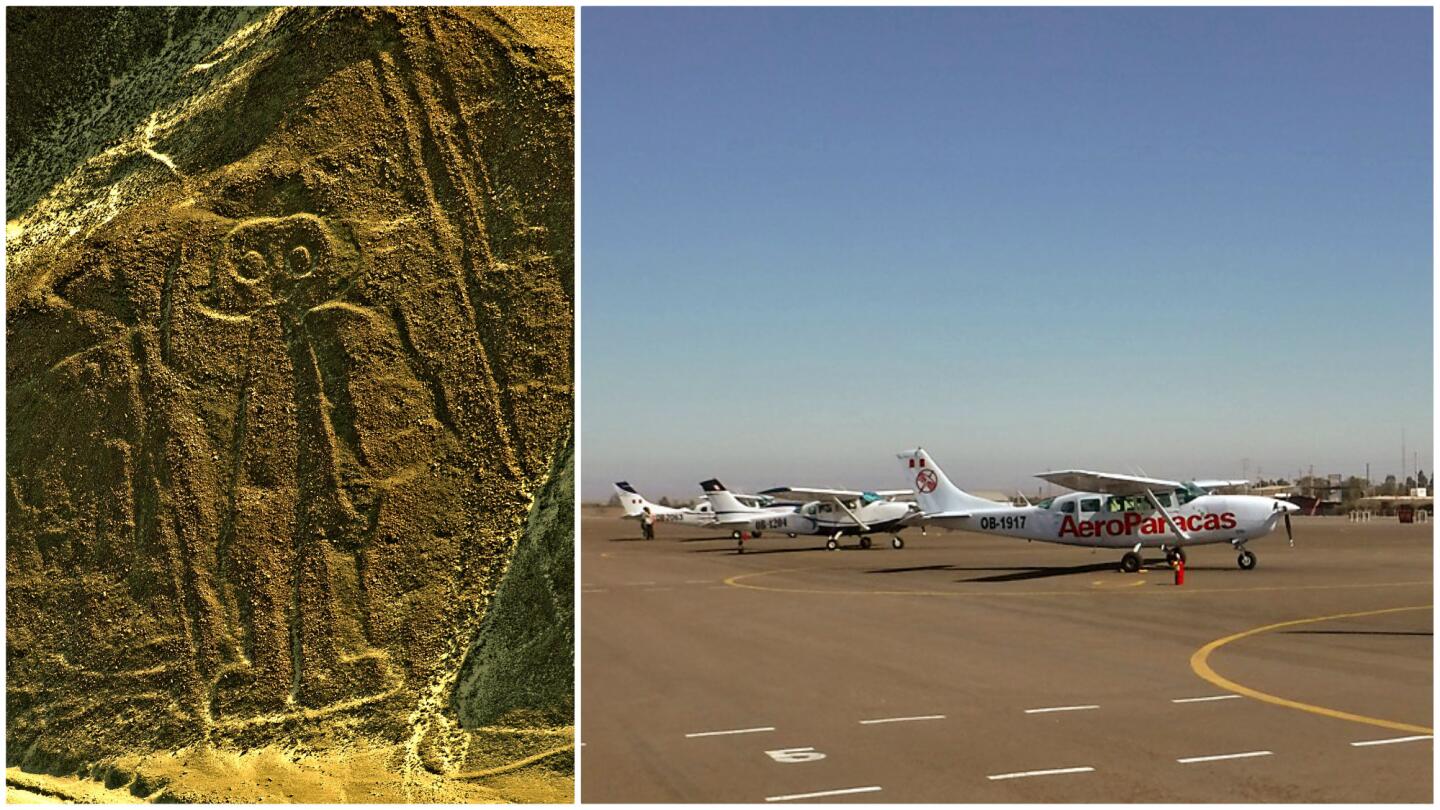
Left, the figure known as the Astronaut. Right, Small passenger planes line up at Maria Reiche Neuman Airport to fly tourists over the Nazca Lines.
(From left: AFP/Getty Images, Jonathan Fernandez)Advertisement
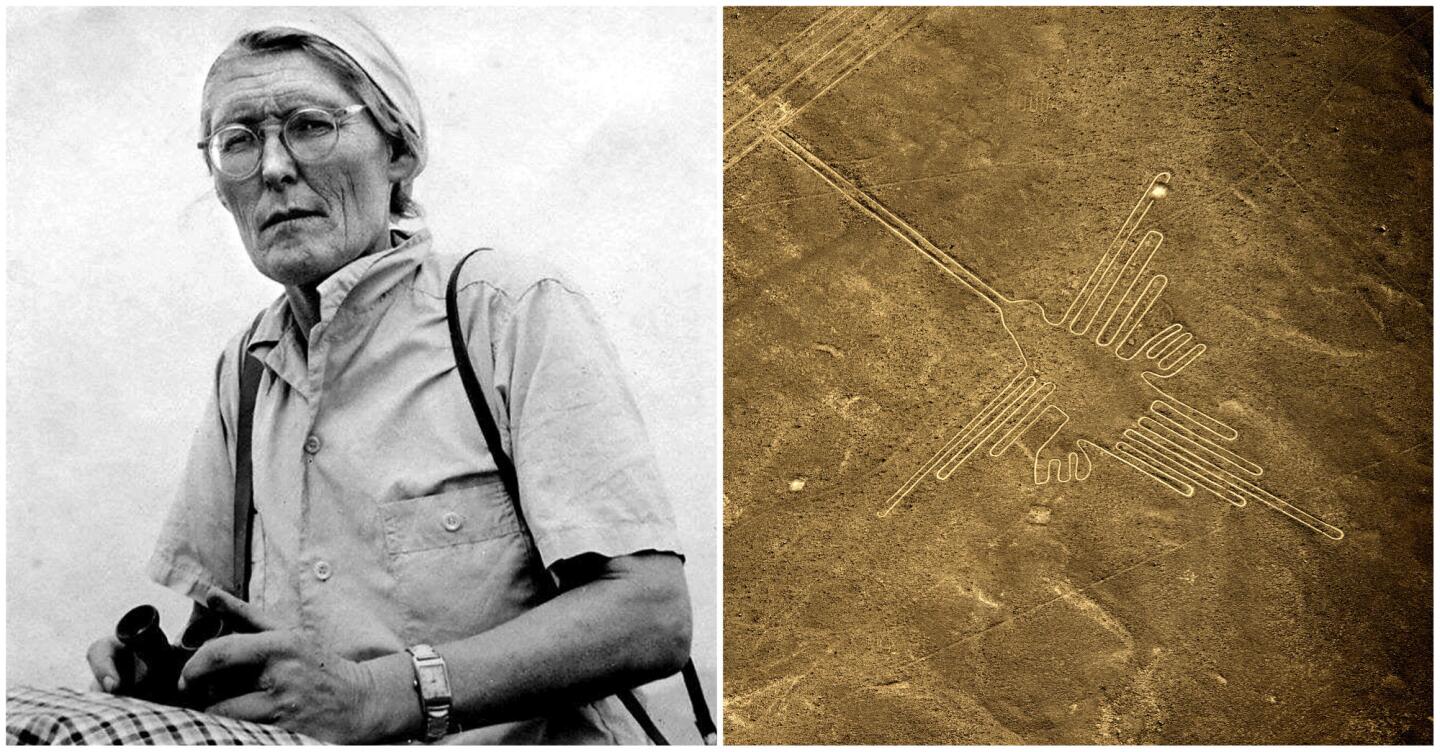
German mathematician and archaeologist Maria Reiche (1903-98) researched the Nazca Lines, beginning in 1940, and helped secure recognition for them. They are now a UNESCO World Heritage Site. Right, aerial view of the hummingbird figure.
(From left: Asociacion Maria Reiche, AFP/Getty Images)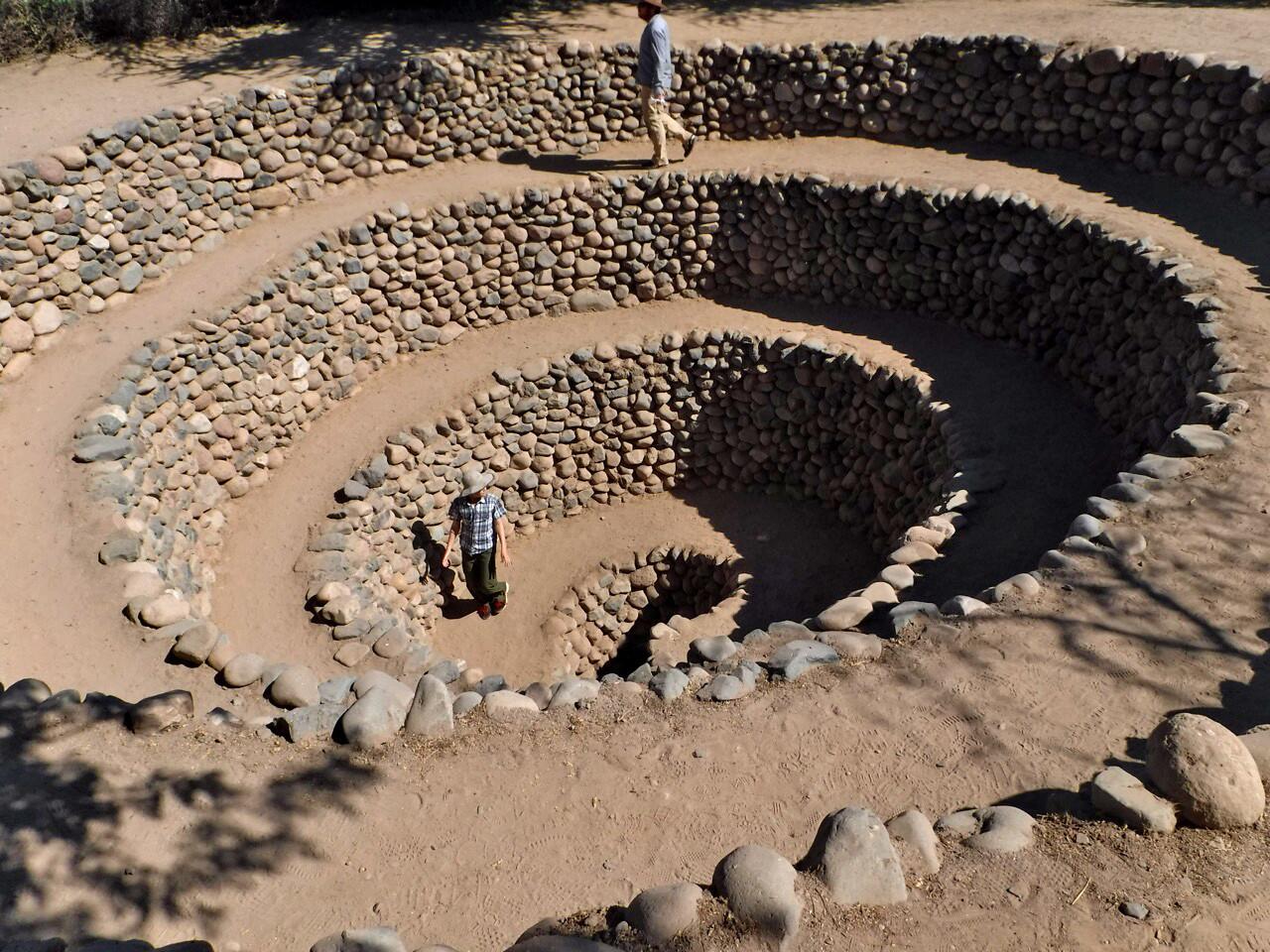
Another mystery in this area of Peru: the Cantalloc aqueducts, which spiral to an underground stream.
(Hilary MacGregor / For the Los Angeles Times)


